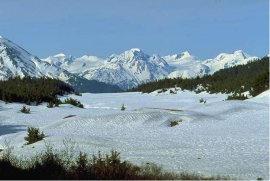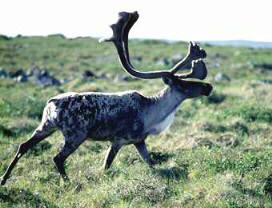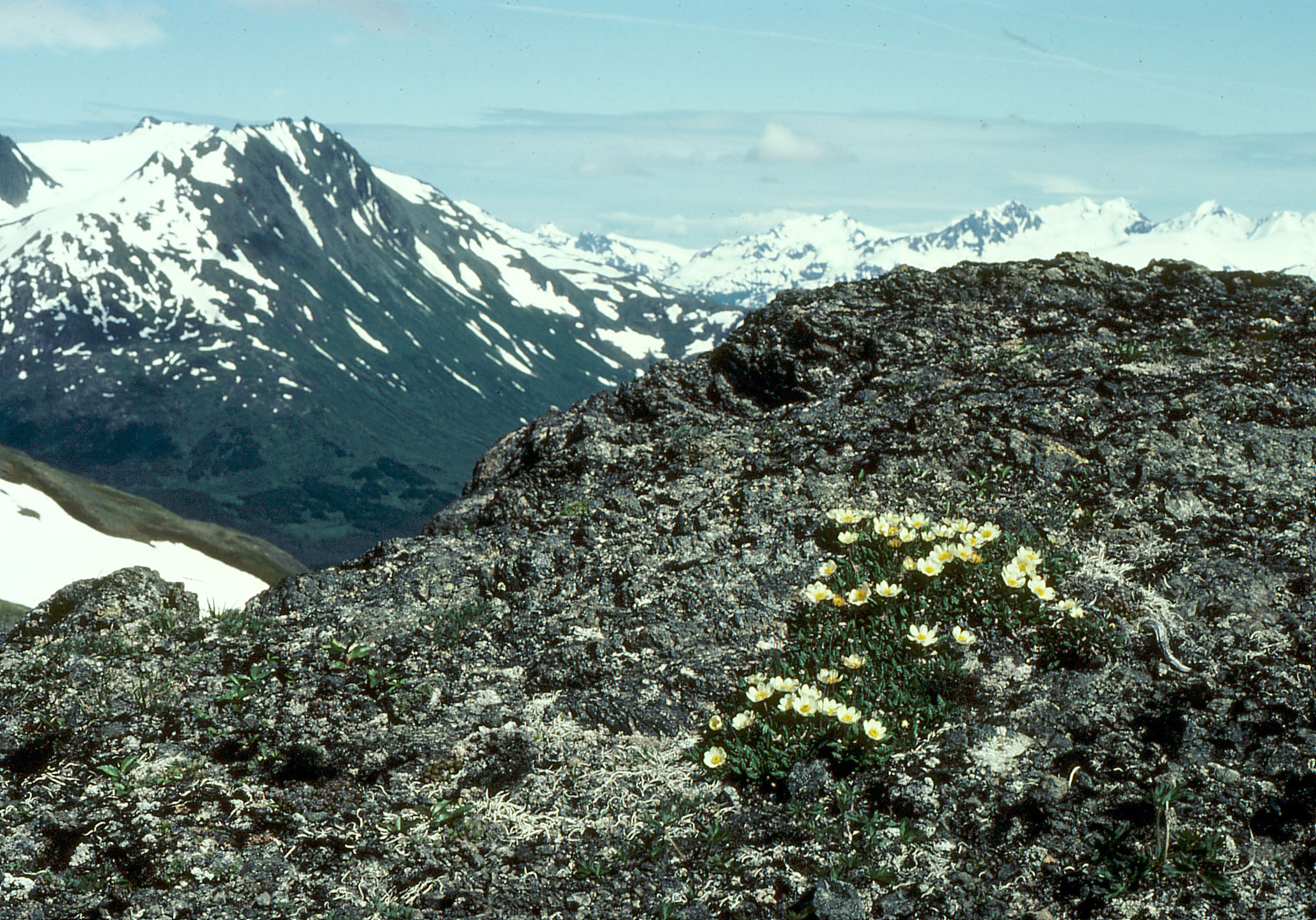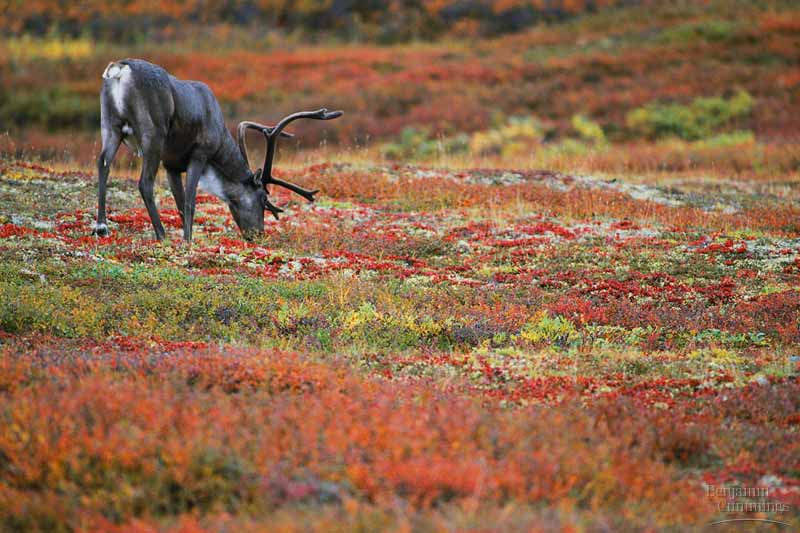










The tundra can be found in the high northern latitudes of the world. Some plants and shrubs bloom in early autumn. During this short period of time, the blooms are brilliant. The growing season in the tundra is very short due to the frozen permafrost that only begins to thaw in mid-summer. Some prehistoric animals have been found preserved in the thick permafrost. The most common animals found in the tundra are the caribou, reindeer, and the lemming.
The
All locations reach low temperatures that can freeze on any night, even in the tropical locations. The summers in the tundra are short. The tundra experiences 24 hour long days. In the summer the soil becomes very soggy because of the melted permafrost. In the winter the weather can reach -50 degrees fahrenheit. The precipitation received in this biome is less than ten inches a year. There is very little evaporation. This causes the moisture to be absorbed into the ground which is called premafrost. The permafrost lies six inches below the ground. The permafrost prevents drainage of excess moisture. Trees and plants have a hard time growing in these conditions. The growing season is short and can last up to 60 days.
Vegetation or plants are in abundunce in the tundra. Some of the major ones are the lichen which grows on rocks and is made of fungus and algae living and growing together. Other types are the dwarf willow that are small tundra shrubs and the cushion plants that grow in low, tight clumps to protect them from the cold.
Plants in the tundra biome have many adaptations such as being small and able to grow close to the ground to protect from the cold and harsh temperatures. Also they absorb more heat from the sunshine than they get from other plants.
Many of the animals in the tundra biome are mostly vegetarians. This helps the animals to get more food with there being so many plants.
The animals of the tundra are found in various cold regions throughout the world, such as the high mountains of western Mexico. Since the weather in the tundras is cold and dry, the animals of the biome have special adaptations so that they can live in their areas and provide for their needs.
The arctic fox is a canine carnivore who lives in the arctic regions of Europe, Asia, and North America. The arctic fox can grow up to 46-68 cm long (18-26 3/4 in.) with a tail of 35 cm long (13 3/4 in). The arctic fox is one of six of the tundra animals that eat birds, lemmings, marine life, and any leftover animals. This mammal has well furred paws, small rounded ears, and white fur. Every May or June they have a litter of 4-11 puppies.
The grey wolf is another canine carnivore, but he lives in eastern Europe, east India, Russia, Canada, and some of the northern United States. They also live in the high mountains of the western population of Mexico. The grey wolf has a body size of 1-1.4 m (3 1/4-4 1/2 ft.) and a tail that is 30-48 cm long (11 3/4-18 3/4 in). Due to their large size, the grey wolf hunts and feeds on the larger animals that inhabit the tundra. Like the arctic fox, the grey wolf has a litter of 3-8 puppies in May or June.
The musk ox and the caribou live in Northern Canada, Greenland, Northern Europe and Asia, Scandinavia, Siberia, and Alaska. Both the caribou and the musk ox are herbivores that belong to the deer family. Both eat plants like grass, low shrubs, and lichen. The caribou can grow up to 1.2-2.2 m with a tail of 10-21 cm. The musk ox grows up to 1.9-2.3 m, their tails 9-10 cm. The musk ox has long shaggy hair that keeps them warm in the subzero temperature. The caribou has short hair that can either be black, brown, gray, or off-white. The caribou migrate many hundreds of miles in between their breeding. When they do breed, the females produce one to two young. However, the musk ox only has one young at a time.
Another animal in the tundra would be the polar bear. They belong to the group of mammals called the carnivores. They love to eat fresh meat, such as salmon, seals, and birds. They will also eat berries and eggs. They can smell their food even when it is 20 miles away. After eating 90 pounds of food a day, they can still be hungry. Polar bears have distinct white fur that helps them blend into their snowy surroundings.
 
|